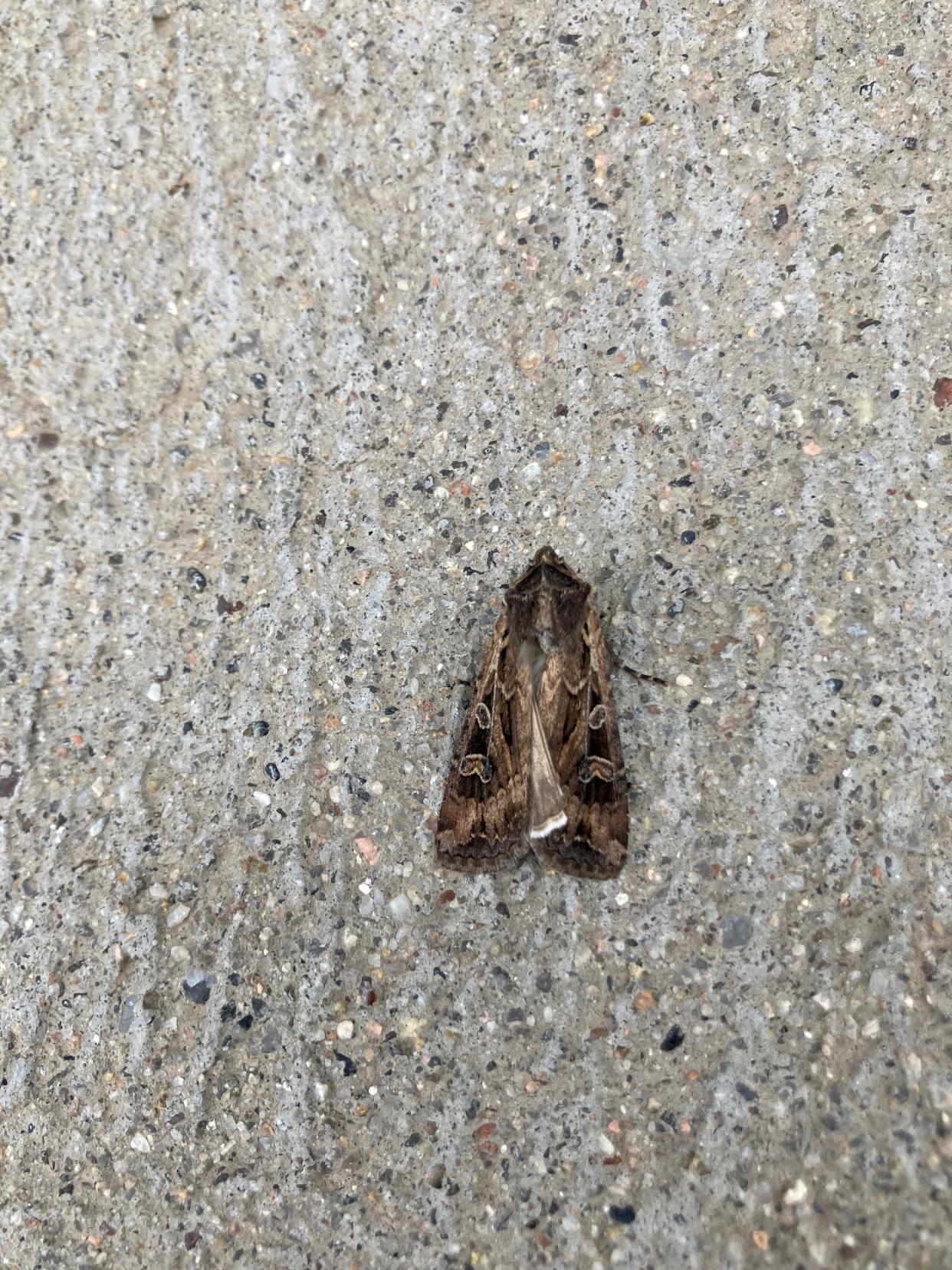Seeing miller moths in your house? Here's Colorado's outlook, and how to get rid of them

Likely, you've noticed in recent days a proliferation of miller moths fluttering around the kitchen, living room and, perhaps most annoyingly, your bedroom.
Like allergies, miller moths are a spring nuisance to Colorado Front Range residents and cause varying degrees of annoyance, mostly depending on the weather.
Some years, allergies and moths are tolerable. Other years, insufferable.
Here are answers to frequently asked miller moth questions, according to the Colorado State University Extension Service.
When and why do miller moths arrive along the Front Range?
Miller moths, the adult stage of the army cutworm, migrate from eastern Colorado and beyond to the Front Range and eventually the mountains in spring. They migrate in reverse (usually in the latter half of September) in much smaller numbers because many die in summer.
Exactly when the migration starts and for how long it lasts varies by year, but it generally begins in early May and lasts into early June. A likely explanation for the migration is the moths follow a reliable food source of blooming flowers, which provide nectar.
What is the population outlook for miller moths in Colorado in 2023?
There is no clear population outlook for this season but a "pulse'' of miller moths made its way to the Fort Collins area several days ago when temperatures were warmer, according to Whitney Cranshaw, retired Colorado State University entomologist.
"The ones here will hunker down and stay put until it gets warmer at night when they can fly easier," said Cranshaw, adding he hasn't heard of any significant cutworm population increases that would increase the moth population. "It doesn't look like it's going to get warm enough for them to fly for a week or more, so people will be seeing them around."
He said a second factor regarding the number of moths you see around your house is the abundance or lack of abundance of native flowers and nectar on which the moths feed. The fewer the native plants blooming, the more moths will congregate in urban landscapes to feed on such plants as lilac, cherries, spirea, euonymus, cotoneaster, horse chestnut, raspberry and Russian olive.
Colorado vegetable gardening: When, what, where to plant and how to water
Do miller moths serve any useful purpose?
Maybe not to humans, but they serve as a food source for birds, bats and bears.
Ever notice birds, mostly swallows, concentrating at intersections? The birds are feeding on miller moths that shelter in automobiles and emerge while vehicles are idling at stoplights.
Moths are important plant pollinators as they fly from plant to plant to feed on nectar. This is even more important as bee populations are decreasing.
Do miller moths eat clothes?
Miller moths do not feed on household items — the only damage they cause indoors is spotting drapes or other surfaces when they excrete fluid.
Here are the best methods to get rid of miller moths in your home
Active methods include swatting or using a vacuum to suck up the insects.
You can trap them by suspending a light bulb over a bucket partially filled with soapy water. Moths attracted to the light often will fall into the water.
Moths are sensitive to certain noises, which cause evasive flying in response to frequencies used by bats that prey on moths using echolocation. The sounds that work best to elicit greatest response are jingling keys, rattling coins and crumpling aluminum cans. Sounds can scare moths from hiding places for easier removal by swatting, vacuuming and trapping.
Moths are not very susceptible to insecticides and their use is not recommended.
Colorado lawn care: What to know about snow mold, fertilizer, watering and more
Why are moths attracted to light?
It's not warmth, as some think.
Indoor and outdoor lights confuse moths because they use the moon or other celestial lights to orient their flights. This allows moths to fix their flights by maintaining a constant angle to the light source.
Artificial lights close to earth confuse the moth's response since it is so close to these unnatural light sources. That forces the moth to try and maintain its flight angle to these close light sources, causing it to spiral and fly erratically to the light source.
This article originally appeared on Fort Collins Coloradoan: What to know about miller moths in Colorado in 2023

